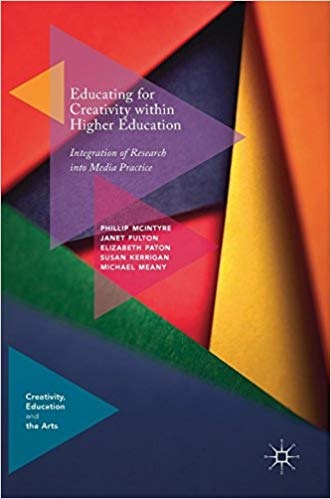media
Select an item by clicking its checkbox
Date Reviewed: December 10, 2019
As our students encounter work in what is more and more a gig economy, the authors of this book have been thinking about the implications of such employment for those entering the workforce and also for those who wish to pursue creative endeavors either as full-time or part-time work. The authors focus on creativity as a locus for student and worker resilience and adaptation to changes in global economics.
The first several chapters outline various theories of creativity. It is particularly useful that the authors elaborate on many varied theories of creativity within different academic disciplines and contexts. Chapter 1 includes thinking about creativity within a global context, and how different social, cultural, and political situations affect the development of ideas of what constitutes creativity, who is creative, and how they come to be creative. The authors consider the nature of creative development within both collectivist and individualist views of society. They also consider several religious contexts for the development of creativity, including thinking about humans as divine conduits, both as described in sacred texts (such as the story of Moses) and as the Muses working through artists.
One strength of the early chapters is seeing the deep theory of creativity in a number of fields. In chapters 3 and 4, the authors turn not just to describing theories, but to challenging them, saying that some might misidentify creativity. The authors probe the sociology and social systems that allow certain types of creativity to become dominant in various societies, and which types of creativity are recognized by their societies. The confluence approaches and systems model, which comprise the central chapters of the book, looks at a number of ways in which creativity can fit or allow a person to thrive within a system. The authors highlight various features such as intrinsic motivation, domain relevant skills (such as knowledge of field and necessary technical skills), and creativity relevant skills. An overwhelming strength of this book is how the reader can look through the authors’ lenses of multiple disciplines and access their background research, ideas, and the main voices in their fields for others to know, which helps readers understand how these ideas apply in various contexts.
In chapters 5 and 6, the authors turn from a descriptive project to a constructive one, considering how systems approaches can provide guidance for thinking about effective ways to develop creativity in higher education that will provide students and workers with the necessary tools to adapt to new work situations as our economies evolve. The authors then tease out implications and impacts of such a model and its adaptability to other contexts. All these confluence systems are deeply interactive, and recognize the context in which the person has lived and operates. It is here that the book best provides help to scholars and practitioners in theological and religious studies. While the book is written within the context of media studies, it is clear in the second half of the book where these systems approaches could apply to someone who wishes to either research or serve a religious community, and the authors have begun that work of thinking how this model can work in other contexts. In its last chapters, the book provides multiple ideas about how one’s context can positively shape the ability to develop and foster community.
